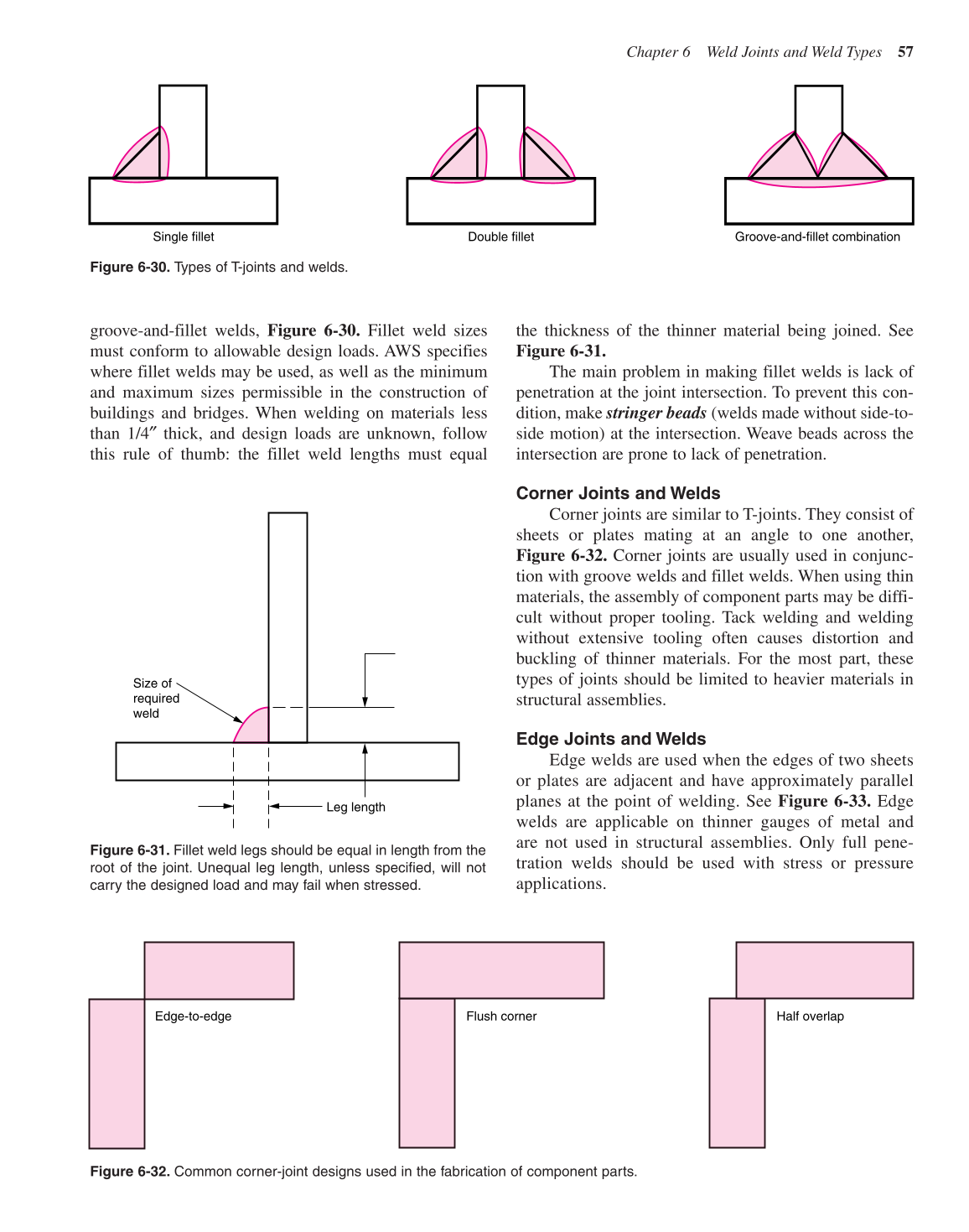groove-and-fillet welds, Figure 6-30. Fillet weld sizes
must conform to allowable design loads. AWS specifies
where fillet welds may be used, as well as the minimum
and maximum sizes permissible in the construction of
buildings and bridges. When welding on materials less
than 1/4″ thick, and design loads are unknown, follow
this rule of thumb: the fillet weld lengths must equal
the thickness of the thinner material being joined. See
Figure 6-31.
The main problem in making fillet welds is lack of
penetration at the joint intersection. To prevent this con-
dition, make stringer beads (welds made without side-to-
side motion) at the intersection. Weave beads across the
intersection are prone to lack of penetration.
Corner Joints and Welds
Corner joints are similar to T-joints. They consist of
sheets or plates mating at an angle to one another,
Figure 6-32. Corner joints are usually used in conjunc-
tion with groove welds and fillet welds. When using thin
materials, the assembly of component parts may be diffi-
cult without proper tooling. Tack welding and welding
without extensive tooling often causes distortion and
buckling of thinner materials. For the most part, these
types of joints should be limited to heavier materials in
structural assemblies.
Edge Joints and Welds
Edge welds are used when the edges of two sheets
or plates are adjacent and have approximately parallel
planes at the point of welding. See Figure 6-33. Edge
welds are applicable on thinner gauges of metal and
are not used in structural assemblies. Only full pene-
tration welds should be used with stress or pressure
applications.
Chapter 6 Weld Joints and Weld Types 57
Figure 6-30. Types of T-joints and welds.
Groove-and-fillet combination Double fillet Single fillet
Figure 6-31. Fillet weld legs should be equal in length from the
root of the joint. Unequal leg length, unless specified, will not
carry the designed load and may fail when stressed.
Leg length
Size of
required
weld
Figure 6-32. Common corner-joint designs used in the fabrication of component parts.
Flush corner Half overlap Edge-to-edge
